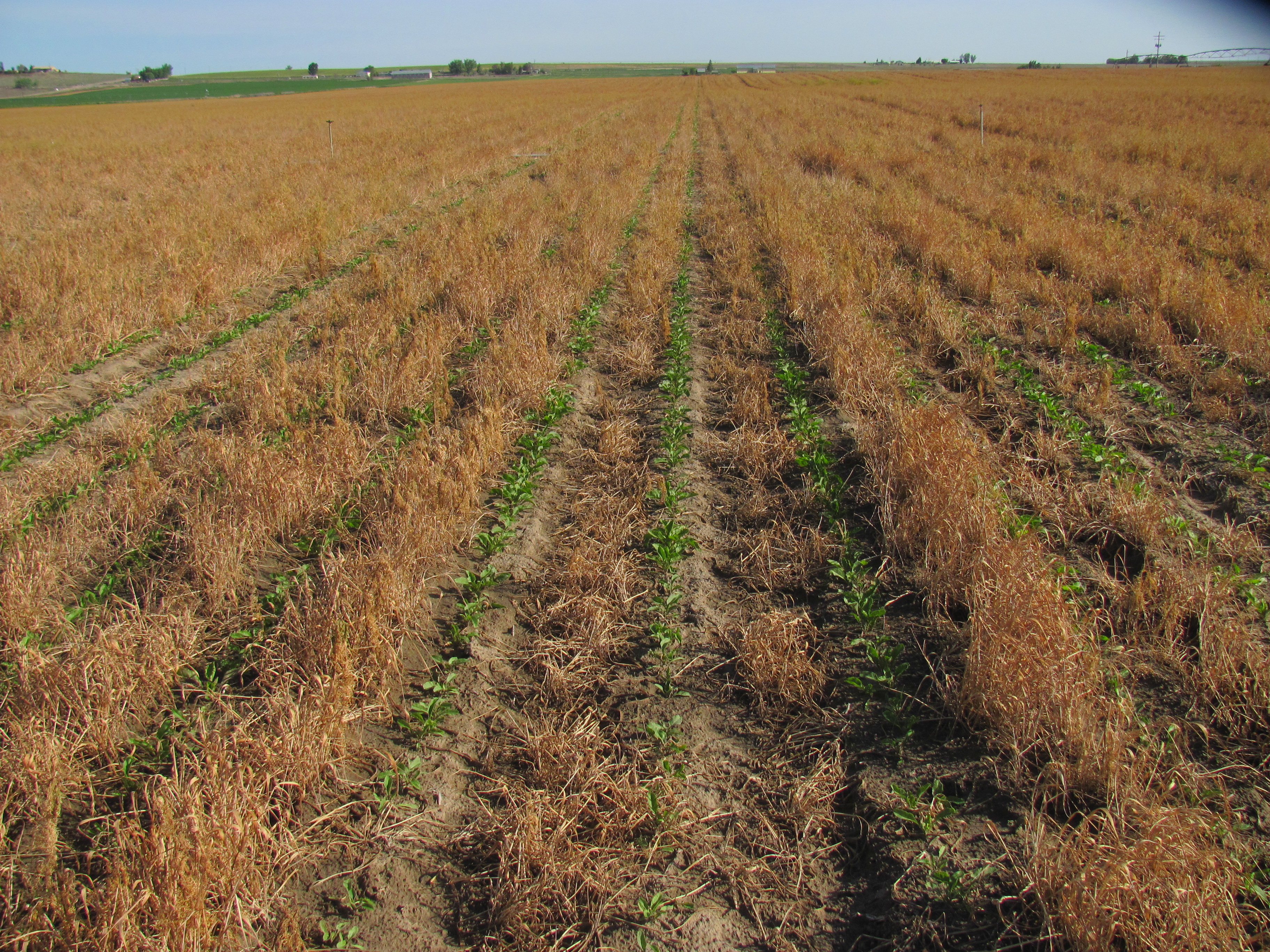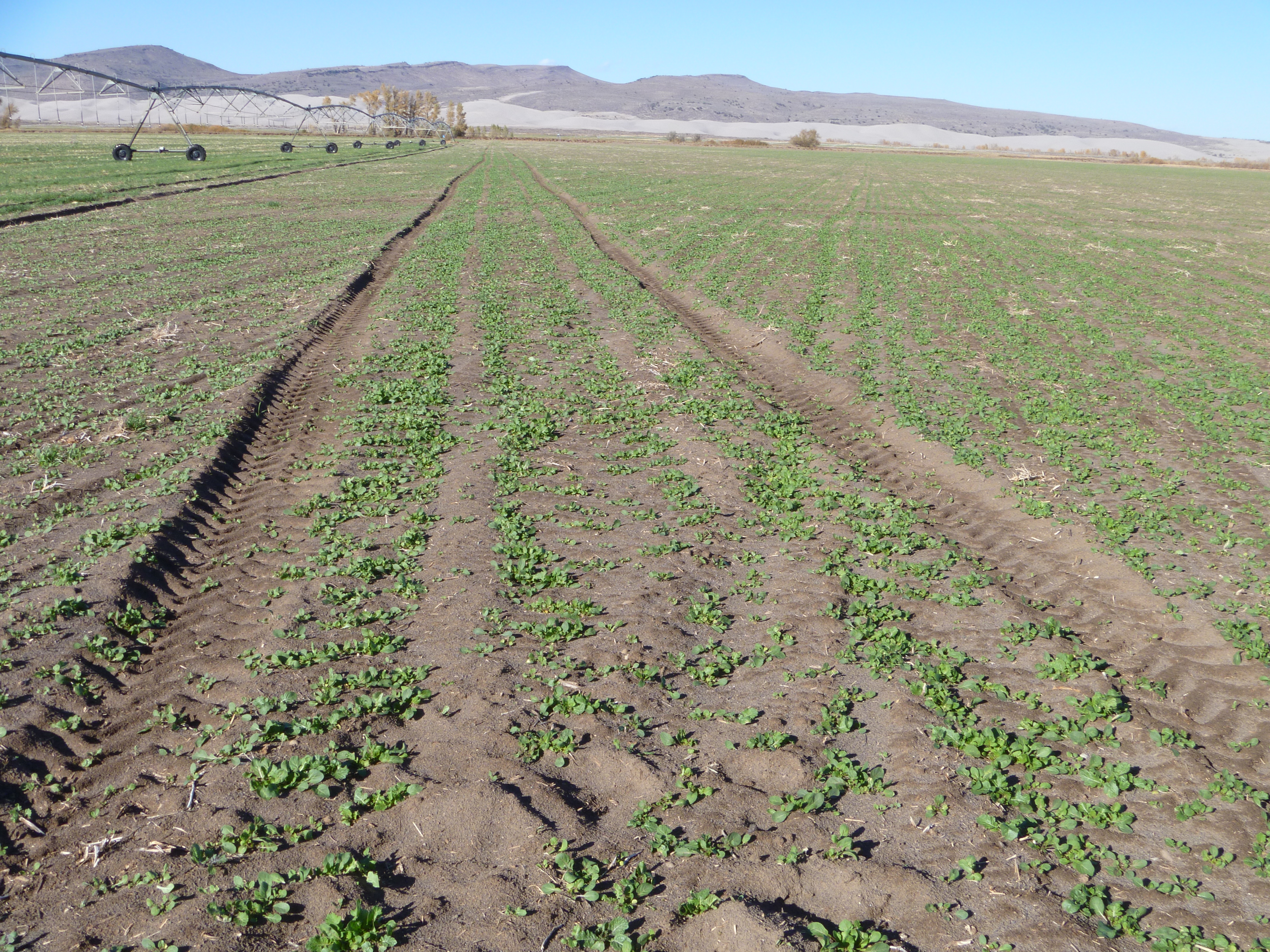This article appears in the November 2017 issue of Potato Grower.
I once saw a cartoon of some cavemen trying with all their might to slay a mighty mammoth. The picture showed the mammoth just wiping out the cavemen’s hunting party with his long tusks. With only a handful left in the hunting party, one stood back and said to the others, “Maybe we should start throwing the other end of the spear.”
Let’s examine the tip of that spear and relate it to soil health principles. The very point of the spear is most critical as it pierces the thick skin; the deeper the spear tip goes in, the more effect it will have. The best, sharpest soil health spearheads:
- Minimize soil disturbance;
- Providing armor (cover) for the soil surface;
- Maximize diversity of plants in the rotation;
- Provide a living root (cover crop) as much as technically feasible for the cropping system; and
- Incorporating livestock into the overall cropping system.
These principles of nature are as important for us to follow as it is for the cavemen to throw the right end of the spear.
Don Reicosky, a researcher with the USDA’s Agicultural Research Service (ARS), says that the more we till (disturb) the soil, the more precious carbon we lose from the soil ecosystem. So what can we do in a potato- or sugarbeet-type production system that has high disturbance in the harvest and/or planting phase of the system? It’s like a dance; we need to recognize that during some parts of the cropping system we will take a step backward. But during the other part of the crop rotation, we hopefully are implementing as many of the soil health principles as possible to take two steps forward.
 Some of the steps forward could be implementing strip-till or no-till practices when planting sugarbeets into small grain stubble. Growers can plant fall cover crops in their small grain stubble after harvest. When I first started teaching soil health in Idaho, several potato producers said, “We love your message but don’t know how to implement the practices.” Several potato producers are immediately planting cover crops the day after harvest to keep the soil covered. Some are planting covers the fall before going into the potato crop. One grower in eastern Idaho is learning to direct-seed his potatoes directly into the cover crop he planted the previous fall. Producers are planting biofumigant cover crops (mustards) and even starting to look at radish and oat varieties that are resistant to Columbia root knot nematodes.
Some of the steps forward could be implementing strip-till or no-till practices when planting sugarbeets into small grain stubble. Growers can plant fall cover crops in their small grain stubble after harvest. When I first started teaching soil health in Idaho, several potato producers said, “We love your message but don’t know how to implement the practices.” Several potato producers are immediately planting cover crops the day after harvest to keep the soil covered. Some are planting covers the fall before going into the potato crop. One grower in eastern Idaho is learning to direct-seed his potatoes directly into the cover crop he planted the previous fall. Producers are planting biofumigant cover crops (mustards) and even starting to look at radish and oat varieties that are resistant to Columbia root knot nematodes.
Growers would be well-served learning more about the carbon cycle, as it is the economy of the soil ecosystem. During plants’ photosynthesis, the energy from the sun makes sugars that are leaked out the root system that feeds the soil biology. This in turn makes nutrients available to the plant and produces soil structure. Developing soil structure is all about soil biology. Producers need to build a well-structured soil (granular). To have good, aerobic soil that has good air movement and water infiltration, producers need to follow the principles of soil health.
“Soil-borne diseases are most damaging when soil conditions are poor as a result of inadequate drainage, poor soil structure, low organic matter, low soil fertility and high soil compaction,” says George Abawi, a plant pathologist specializing in the integrated management of root diseases at Cornell University.
 Jon Stika, an NRCS colleague, taught me that whenever you have a question, take a minute and see how nature would fix it. For example, if I have some compaction at 10 inches deep, maybe I could use some deep-root cover crops in my mix. I also need more surface granular soil structure; Mother Nature might add to the cover crop mix grasses with lots of fine, fibrous roots. Diversity can be greatly enhanced when we have an opportunity to plant covers in the rotation.
Jon Stika, an NRCS colleague, taught me that whenever you have a question, take a minute and see how nature would fix it. For example, if I have some compaction at 10 inches deep, maybe I could use some deep-root cover crops in my mix. I also need more surface granular soil structure; Mother Nature might add to the cover crop mix grasses with lots of fine, fibrous roots. Diversity can be greatly enhanced when we have an opportunity to plant covers in the rotation.
It’s been said, “If you throw Mother Nature out the front door, she’ll come through the back door with a pitchfork.” If growers are hospitable and do their part to help Mother Nature do her work, she’ll reward them with healthier soils and better crops.
Marlon Winger is a regional soil health specialist working in Idaho, Wyoming and Montana for the USDA’s Natural Resources Conservation Service (NRCS).